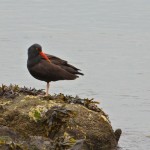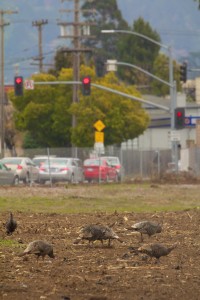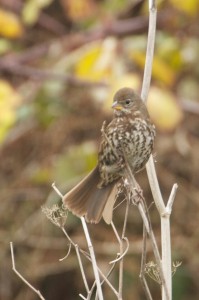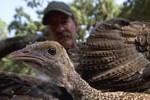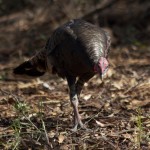This past weekend was full of birds Birds BIRDS. I once again participated in two of the local Audubon Society Christmas Bird Counts, in central Contra Costa County and in Albany/El Cerrito for the Oakland Count. I’ve explained a bit about Christmas Bird Counts previously including here.
One enduring fact of local counts here seemed to be that the weather would exhibit some daunting combination of at least 2 of the following: cold, wet, or windy. To me, California CBC’s mean trudging out to the end of Albany Bulb, trying to keep my binoculars dry as rain drops pepper my raincoat.
Every once in a while the weather cooperates, and this weekend we had dry and calm conditions (if a little foggy in the morning of the CoCo count). The birds seemed to appreciate it too. Although duck numbers seemed pretty low, we did well, especially on the Oakland count. With Kevin’s great leadership and willing to actually count and look through large flocks of gulls, we ended the day with 110 species! This is all between the bay and top of the Berkeley hills. Possibly the most surprising bird for me were these guys, who were seen right off Buchanan street a few blocks from I-80.
There are always some birds in the bay, and while we missed some that we usually see (Eurasian Wigeon, Red Knot, Blue-winged Teal, some of the other loon species) we still got some of the classic bay birding experiences, such as finding a perched Peregrine Falcon contemplating breakfast choices, or the wheeling, flashing flocks of small shorebirds crossing low over the water. While not particularly helpful for identifying birds, seeing the shorebirds scattered over immense stretches of exposed mudflat at low-tide gives one a sense that the fragile line between land and water here in the bay does provide quite a bit of habitat for many different species.
The upland birds were particularly active in the afternoon. Some counts we get a few pulses of activity, but we did quite well for bird diversity both at the often quiet Albany Hill and the Sunset View Cemetery. Some birds that we saw a lot of, and that were also seen by a lot of other folks in other parts of the count circle, were things like Lincoln’s Sparrows and Fox Sparrows (below).
Also a treat was having Andrea Kissack from KQED Quest along with us to do a story on the Christmas Bird Count. Her voice is familiar to anyone who has watched the weekly science magazine on KQED, or listened to the radio or podcasts. She followed along with us for the morning, listening to the process of counting birds. She was also at the countdown dinner to hear the end result and species tally. The program should air in early January.
In the Contra Costa count, our group saw 90 species, and the entire count circle totaled in the 140’s.

